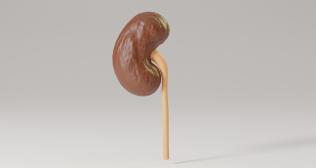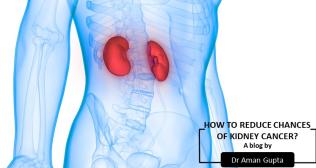
Paraphimosis: Symptoms, Causes, and Treatment
In the realm of men's health, some conditions require immediate attention to prevent serious, long-term complications. Paraphimosis is one such condition. It is a urological emergency that, while not widely known, can cause significant pain and lead to severe tissue damage if not treated promptly. It occurs in uncircumcised males when the foreskin becomes trapped behind the head of the penis and cannot be returned to its normal position.
Distinguishing this from other less urgent penile issues is critical. A lack of awareness can lead to dangerous delays in seeking care. Understanding the causes, recognizing the distinct symptoms, and knowing that immediate medical intervention is necessary are paramount for anyone who experiences this condition.
What Is Paraphimosis?
To properly understand the condition, it is essential to answer the question, what is paraphimosis? It is a medical emergency where the foreskin of an uncircumcised penis is retracted behind the glans (the rounded head of the penis) and becomes stuck. Once trapped in this position, the tight band of foreskin acts like a tourniquet, restricting blood flow.
This constriction prevents lymphatic fluid from draining properly, leading to significant swelling of the glans. This swelling, in turn, makes it even more difficult for the foreskin to be pulled back over the head, creating a dangerous and painful cycle. If left untreated, the lack of blood flow can lead to tissue death (gangrene) of the penile tip.
The Common Paraphimosis Causes
The primary paraphimosis cause is the failure to return the foreskin to its natural, forward position after it has been retracted. This can happen in a variety of situations. A clear understanding of the paraphimosis causes is key to prevention.
Common Scenarios Leading to Paraphimosis
- After Cleaning or Urination: Forgetting to pull the foreskin back down after cleaning beneath it or after urination is the most frequent cause.
- Following Medical Procedures: The condition can occur after a medical examination, the insertion of a urinary catheter, or procedures like a cystoscopy if the foreskin is not properly repositioned by the healthcare provider afterward.
- During Sexual Activity: Vigorous sexual intercourse or masturbation can sometimes cause the foreskin to become trapped.
- Infections and Inflammation: Conditions like balanitis (inflammation of the glans) can cause swelling that makes it difficult for the foreskin to move freely, increasing the risk of it getting stuck.
- Trauma: An injury to the genital area can cause swelling that leads to paraphimosis.
A naturally tight foreskin (a condition known as phimosis) can also be a predisposing factor, as it is more likely to get stuck once retracted.
Recognizing the Paraphimosis Symptoms
The paraphimosis symptoms are usually obvious and develop quickly after the foreskin becomes trapped. They are clear signals that something is wrong and that immediate medical help is needed.
Key Signs of Paraphimosis
- Pain: Significant and often worsening pain in the head of the penis is a primary symptom.
- Swelling: The glans will become swollen and edematous. A tight, constricting band of swollen foreskin will be visible behind the head of the penis.
- Discoloration: The tip of the penis may change color, turning dark red or blue due to the lack of blood flow. This is a very serious sign.
- Inability to Cover the Glans: The most defining symptom is the physical inability to pull the trapped foreskin forward over the head of the penis.
- Difficulty Urinating: In some cases, the swelling can interfere with the ability to pass urine.
Diagnosis and Medical Evaluation
The diagnosis of paraphimosis is almost always made based on a simple physical examination. A doctor can immediately recognize the characteristic appearance of the trapped foreskin and the swollen glans. No complex imaging or blood tests are typically required. The doctor will likely ask about when the symptoms started and what activity preceded them to understand the context.
Effective Paraphimosis Treatment
Paraphimosis treatment is considered a medical emergency, and the goal is to reduce the swelling and return the foreskin to its normal position as quickly as possible to restore blood flow. Treatment should never be attempted at home.
Immediate Medical Interventions
A doctor will first attempt manual reduction. This involves several techniques:
- Manual Compression: The doctor will apply firm, steady pressure to the swollen glans for several minutes to squeeze out the trapped fluid, reducing its size.
- Application of Ice: Ice packs may be applied to the area to help reduce swelling.
- Osmotic Agents: In some cases, a substance like granulated sugar may be applied to the glans. The sugar draws fluid out of the swollen tissue through osmosis, helping to reduce its size.
- Use of Lubricants: Once the swelling is reduced, the doctor will apply a lubricant and use a specific technique to gently push the glans back through the foreskin while pulling the foreskin forward.
Advanced and Surgical Options
If manual reduction is unsuccessful, more invasive steps are required.
- Hyaluronidase Injections: An injection of this enzyme can help disperse the trapped fluid more quickly, facilitating reduction.
- Dorsal Slit Procedure: This is a small surgical incision made in the constricting band of the foreskin. This immediately relieves the pressure and allows the foreskin to be easily returned to its normal position. The incision can be stitched up later.
- Circumcision: After the immediate emergency is resolved, a circumcision (the surgical removal of the foreskin) is often recommended as a definitive paraphimosis treatment to ensure the condition can never happen again.
The Importance of Urgent Action
Paraphimosis is a serious condition where time is of the essence. Any delay in treatment increases the risk of severe complications, including permanent damage to the penis. It is not a condition that will resolve on its own.
Recognizing the symptoms and seeking immediate medical care is the only safe and appropriate response. With prompt and proper treatment from a healthcare professional, the outcome is almost always excellent, with a full recovery and no long-term damage.
Frequently Asked Questions
1. What is the difference between phimosis and paraphimosis?
Ans. Phimosis is the inability to retract the foreskin behind the head of the penis. Paraphimosis is the inability to return an already retracted foreskin back to its normal position. Paraphimosis is a medical emergency, while phimosis is not.
2. Can paraphimosis happen to circumcised males?
Ans. No. Paraphimosis can only occur in uncircumcised or partially circumcised males, as it involves the trapping of the foreskin.
3. What happens if paraphimosis is not treated?
Ans. If left untreated, the lack of blood flow can lead to severe tissue damage, ulceration, infection, and potentially gangrene (tissue death) of the head of the penis.
4. Should I try to fix paraphimosis myself at home?
Ans. No, you should never attempt to fix this yourself. Applying force can cause further injury and pain. It requires specific medical techniques to be resolved safely. Go to an emergency room immediately.
5. How can paraphimosis be prevented?
Ans. The best prevention is to always ensure the foreskin is returned to its natural forward position after retraction for any reason, including cleaning, urination, or sexual activity.



















